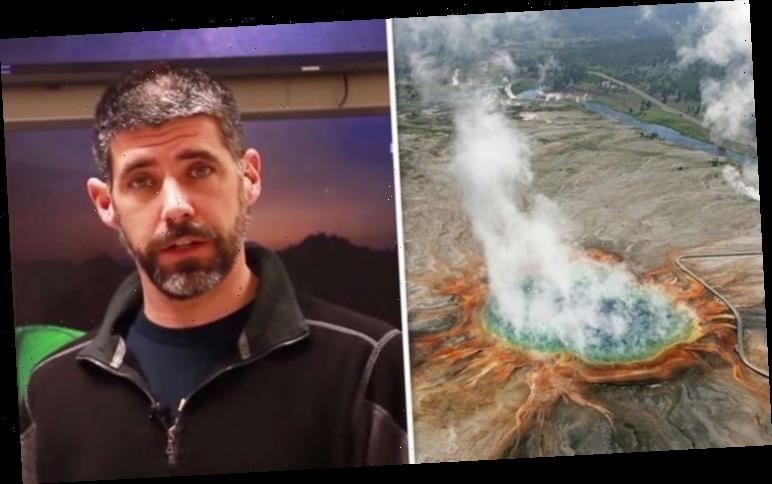The Yellowstone caldera, which lurks beneath the first-ever US national park, gets its chilling nickname as a supervolcano due to its ability to inflict devastation on a global level. Spreading across the states of Wyoming, Montana and Idaho, it is constantly monitored by the USGS (United States Geological Survey) for signs that a supereruption is on its way. This has only happened three times in history, 2.1 million years ago, 1.3 million years ago and 640,000 years ago, leaving some to claim the massive eruption is overdue.
Self-proclaimed experts reach this conclusion by calculating the difference in time between each event, meaning it would be 40,000 years overdue.
Amid the claims, USGS Scientist-in-Charge at the Yellowstone Volcano Observatory, Mike Poland has revealed details of activity over the last year.
He said earlier this month: “During the month of November, the University of Utah seismograph station which is responsible for the operation and maintenance of the Yellowstone seismic network located 107 earthquakes in the Yellowstone region.
“The largest was this one here, a magnitude 3.1 that occurred outside the park, just west of Hebgen Lake.
Subsistence with a little bit of variability
Mike Poland
“There was also a very small swarm of earthquakes that began right at the end of November and continued into early December right here on the west.
“The largest event of this sequence was a magnitude 2.1.”
Dr Poland went on to discuss the deformation recorded.
He added: “This is the GPS deformation over the last two years on the Sour Creek resurgent element station at White Lake.
“Down, in this case, downward trends mean subsistence and upwards trends mean uplift.
JUST IN: Brian Cox’s chilling ‘no escape’ admission over Milky Way black hole revealed
“So over the last two years, there was an overall downward trend that suggests subsistence of the resurgent dome.
“But there’s been some variability here in the last few months caused by storms.”
He also discussed other areas of the caldera.
Dr Poland continued: “Moving to the Mallard Lake Dome and the Old Faithful site, we see the same downward trend over time, over the two years of this plot, with some variations in the last few months again.
“Subsistence with a little bit of variability.
DON’T MISS
Yellowstone volcano: How USGS study showed ‘abnormal’ change [REVEALED]
Yellowstone: How scientists made alarming find in lake [COMMENT]
Yellowstone volcano shock: Eruption mantle runs under California [STUDY]
“If we move to the Norris Geyser Basin, we can see that there was an upward trend, so there had been uplift from 2015, all the way until October 2018.
“It has then stayed mostly steady, with no up or down motion of any consequence until about September 2019.
“That’s when a small subsistence event occurred, about two centimetres.
“Then over the past month or so we’ve been again pretty steady.”
Fellow scientist Jake Lowenstein previously rubbished claims that the volcano is overdue, though.
He told viewers on the USGS YouTube channel in 2014: “When you see people claiming it’s overdue, usually the numbers they come up with say the last eruption was 640,000 years ago, but it erupts every 600,000 years.
“But, in fact, if you average the eruption intervals, there’s 2.1 million to 1.3 million and then another 640,000 years ago.
“If you average those numbers you come up with something that’s over 700,000 years.
So, in reality, even if you tried to make this argument, it wouldn’t be overdue for another 70,000 years.”
Dr Lowenstern went on to state even this calculation is questionably useful.
He added: “The other thing that is important to realise is that when they do statistics based on two eruptive intervals, they are just playing games.
“Because we don’t know. There’s no clock down there, the magma is going to erupt when it wants to erupt.
“There’s been a lot of things that have happened over the last 600,000 years that might indicate there’s less likely of an eruption.“
Source: Read Full Article






